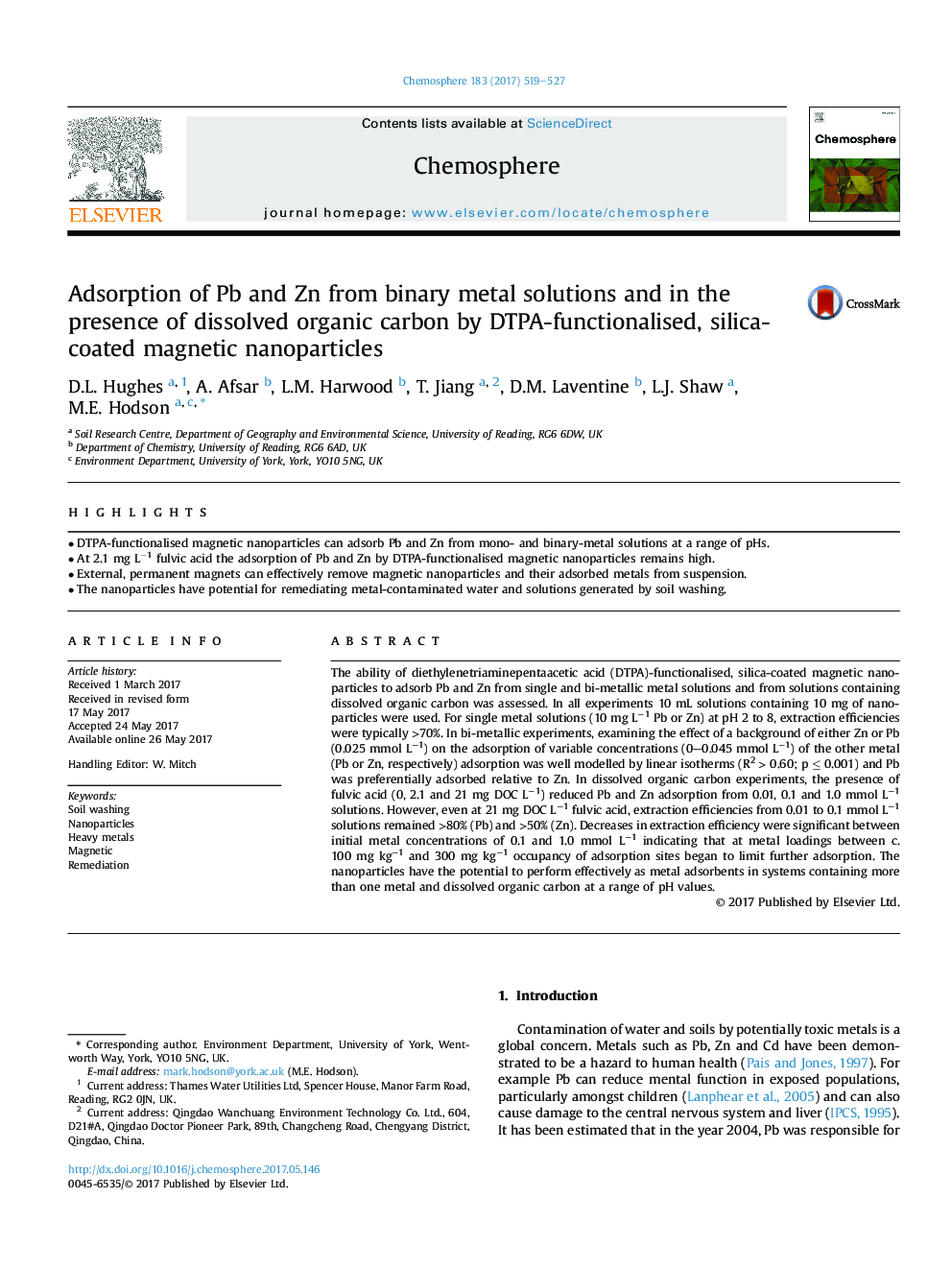| Article ID | Journal | Published Year | Pages | File Type |
|---|---|---|---|---|
| 5745993 | Chemosphere | 2017 | 9 Pages |
â¢DTPA-functionalised magnetic nanoparticles can adsorb Pb and Zn from mono- and binary-metal solutions at a range of pHs.â¢At 2.1 mg Lâ1 fulvic acid the adsorption of Pb and Zn by DTPA-functionalised magnetic nanoparticles remains high.â¢External, permanent magnets can effectively remove magnetic nanoparticles and their adsorbed metals from suspension.â¢The nanoparticles have potential for remediating metal-contaminated water and solutions generated by soil washing.
The ability of diethylenetriaminepentaacetic acid (DTPA)-functionalised, silica-coated magnetic nanoparticles to adsorb Pb and Zn from single and bi-metallic metal solutions and from solutions containing dissolved organic carbon was assessed. In all experiments 10 mL solutions containing 10 mg of nanoparticles were used. For single metal solutions (10 mg Lâ1 Pb or Zn) at pH 2 to 8, extraction efficiencies were typically >70%. In bi-metallic experiments, examining the effect of a background of either Zn or Pb (0.025 mmol Lâ1) on the adsorption of variable concentrations (0-0.045 mmol Lâ1) of the other metal (Pb or Zn, respectively) adsorption was well modelled by linear isotherms (R2 > 0.60; p â¤Â 0.001) and Pb was preferentially adsorbed relative to Zn. In dissolved organic carbon experiments, the presence of fulvic acid (0, 2.1 and 21 mg DOC Lâ1) reduced Pb and Zn adsorption from 0.01, 0.1 and 1.0 mmol Lâ1 solutions. However, even at 21 mg DOC Lâ1 fulvic acid, extraction efficiencies from 0.01 to 0.1 mmol Lâ1 solutions remained >80% (Pb) and >50% (Zn). Decreases in extraction efficiency were significant between initial metal concentrations of 0.1 and 1.0 mmol Lâ1 indicating that at metal loadings between c. 100 mg kgâ1 and 300 mg kgâ1 occupancy of adsorption sites began to limit further adsorption. The nanoparticles have the potential to perform effectively as metal adsorbents in systems containing more than one metal and dissolved organic carbon at a range of pH values.
